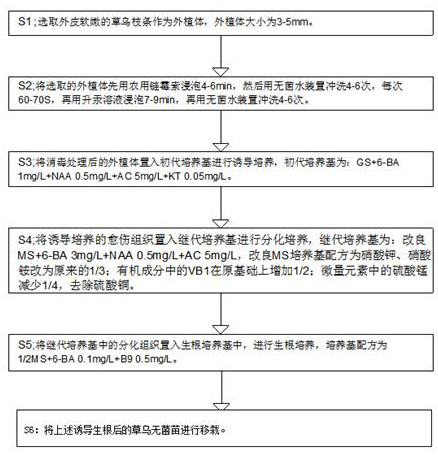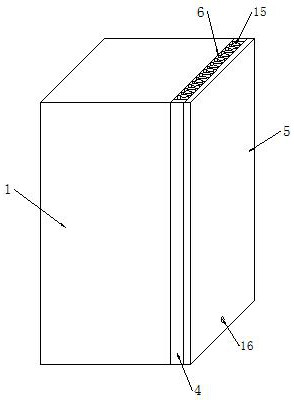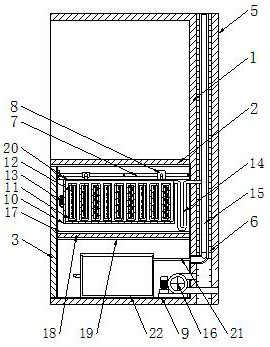A kind of aseptic seedling cultivation method of Aconitum radix
A cultivation method and technology for sterile seedlings, applied in the biological field, can solve the problems of reducing the browning rate of callus, the survival rate of seedlings, and the reduction of browning rate, and achieve the effects of good application prospect, strong growth and improvement of survival rate.
- Summary
- Abstract
- Description
- Claims
- Application Information
AI Technical Summary
Problems solved by technology
Method used
Image
Examples
Embodiment 1
[0055] A method for cultivating aconitum aconitum aseptic seedlings, specifically comprising the following steps;
[0056] S1: Select Aconitum aconitifolia branches with soft and tender skin as explants, and the size of the explants is 3-5mm;
[0057] S2: Disinfect the selected explants. The specific method is: first soak with agricultural streptomycin for 4 minutes, then rinse with sterile water for 4 times, each time for 50 seconds, then soak in 0.1% mercuric solution for 7 minutes, and then use Rinse the sterile water device 4 times;
[0058] S3: placing the sterilized explants into the primary culture medium for inducing culture to form callus;
[0059] The primary medium is: GS+6-BA 1mg / L+NAA 0.45mg / L+AC 5mg / L+KT 0.05mg / L;
[0060] The conditions for the first-generation induction culture are that the culture temperature is 20°C, the light intensity is 2500Lx, and the light is not supplemented at night except for the natural light during the day, and the culture period ...
Embodiment 2
[0068] A method for cultivating Aconitum aconitum aseptic seedlings, specifically comprising the following steps:
[0069] S1: Select Aconitum aconitifolia branches with soft and tender skin as explants, and the size of the explants is 3-5mm;
[0070] S2: Disinfect the selected explants. The specific method is: first soak with agricultural streptomycin for 5 minutes, then rinse with sterile water for 5 times, each time for 60 seconds, then soak in 0.1% mercuric solution for 8 minutes, and then use Rinse the sterile water device 5 times;
[0071] S3: placing the sterilized explants into the primary culture medium for inducing culture to form callus;
[0072] The primary medium is: GS+6-BA 1mg / L+NAA 0.5mg / L+AC 5mg / L+KT 0.05mg / L;
[0073] The conditions for the first-generation induction culture are culture temperature 22°C, light intensity 3000Lx, no light supplement at night except natural light during the day, and the culture period is 22 days;
[0074] S4: Put the induced ...
Embodiment 3
[0081] A method for cultivating aconitum aconitum aseptic seedlings, specifically comprising the following steps;
[0082] S1: Select Aconitum aconitifolia branches with soft and tender skin as explants, and the size of the explants is 3-5mm;
[0083] S2: Disinfect the selected explants. The specific method is: first soak them with agricultural streptomycin for 4-6 minutes, then rinse them with a sterile water device for 6 times, each time for 70 seconds, and then soak them in 0.1% mercuric solution for 9 minutes. Rinse 6 times with a sterile water device;
[0084] S3: placing the sterilized explants into the primary culture medium for inducing culture to form callus;
[0085] The primary medium is: GS+6-BA 1mg / L+NAA 0.55mg / L+AC 5mg / L+KT 0.05mg / L;
[0086] The conditions for the first-generation induction culture are culture temperature 23°C, light intensity 5000Lx, no light supplement at night except natural light during the day, and the culture period is 24 days;
[0087]...
PUM
 Login to View More
Login to View More Abstract
Description
Claims
Application Information
 Login to View More
Login to View More - R&D
- Intellectual Property
- Life Sciences
- Materials
- Tech Scout
- Unparalleled Data Quality
- Higher Quality Content
- 60% Fewer Hallucinations
Browse by: Latest US Patents, China's latest patents, Technical Efficacy Thesaurus, Application Domain, Technology Topic, Popular Technical Reports.
© 2025 PatSnap. All rights reserved.Legal|Privacy policy|Modern Slavery Act Transparency Statement|Sitemap|About US| Contact US: help@patsnap.com



